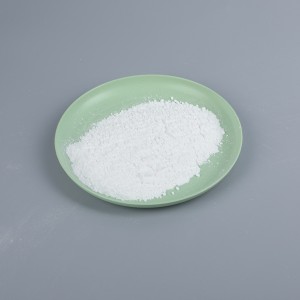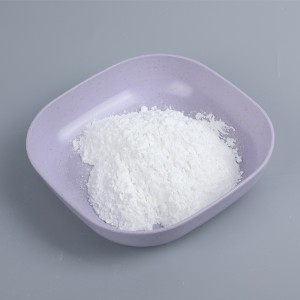Polyimide Monomer
-

2,2-Bis(3-amino-4-hydroxyphenyl)propane/BAP cas:1220-78-6
2,2-bis(4-hydroxy-3-aminophenyl)propane, also known as benzidine, is a versatile and highly functional chemical compound. With its molecular formula C15H16N2O2 and a molecular weight of 252.30 g/mol, this colorless and crystalline substance exhibits exceptional stability and purity. Its CAS number 1220-78-6 ensures its standardized recognition in the industry, amplifying its credibility and reliability.
-

2,2-Bis(3-amino-4-hydroxyphenyl)hexafluoropropane/6FAP cas:83558-87-6
2,2-bis(3-amino-4-hydroxyphenyl)hexafluoropropane is a pure, high-quality chemical compound that is synthesized using state-of-the-art manufacturing processes. With a CAS number of 83558-87-6, it conforms to the highest industrial standards, ensuring the reliability and efficacy of the final products in which it is used.
-

2,2-Bis(3,4-dimethylphenyl)hexafluoropropane/6FXY cas:65294-20-4
2,2-bis(3,4-xylyl)hexafluoropropane, also known as CAS 65294-20-4, is a highly reliable and efficient chemical compound that has witnessed widespread recognition among professionals in the chemical industry. This compound exhibits exceptional thermal resilience and chemical stability, making it ideal for use in a variety of applications.
With its molecular formula C16H18F6, 2,2-bis(3,4-xylyl)hexafluoropropane is a fluorinated aromatic compound that possesses several distinctive properties. First and foremost, its excellent thermal resistance allows it to withstand extreme temperatures, making it suitable for use in heat-resistant coatings, adhesives, sealants, and encapsulating materials. Additionally, its resistance to harsh chemicals and solvents ensures its durability in demanding environments.
This compound offers outstanding electrical insulation properties, making it an excellent choice for applications in the electrical and electronics industries. Its ability to act as an insulating material in wiring, cables, and other electronic components safeguards against electrical breakdown and enhances overall system reliability. Furthermore, its low dielectric constant and dissipation factor contribute to improved signal transmission quality, making it invaluable in high-frequency applications.
Besides its thermal and electrical properties, 2,2-bis(3,4-xylyl)hexafluoropropane offers exceptional resistance to weathering, UV radiation, and corrosion. This makes it a preferred choice for protective coatings, especially in outdoor applications. Its ability to maintain structural integrity, color stability, and overall appearance even in harsh environments sets it apart from conventional coating materials.
-

2-(4-Aminophenyl)-1H-benzimidazol-5-amine/APBIA cas:7621-86-5
As a high-quality chemical, 2-(4-aminophenyl)-5-aminobenzimidazole possesses remarkable properties that make it an ideal choice for a wide range of applications. This compound exhibits exceptional stability, high chemical purity, and precise composition, guaranteeing optimal performance and consistent results. Whether you require it for pharmaceutical research, material synthesis, or any other scientific purposes, our product meets the highest standards in terms of quality and reliability.
-

2-(3-AMINO-PHENYL)-BENZOOXAZOL-5-YLAMINE/APBOA cas:13676-47-6
Welcome to our product introduction for 2-(4-aminophenyl)-5-aminobenzoxazole (CAS 13676-47-6). As a leading provider of chemicals, we are pleased to present this exceptional compound that serves a multitude of purposes across various industries. Recognized for its outstanding properties and diverse applications, 2-(4-aminophenyl)-5-aminobenzoxazole is an essential chemical compound that you can trust for your research and production needs.
-

1,4-bis(4-aminophenoxy)benzene/3491-12-1cas:3491-12-1
1,4-bis(4-aminophenoxy)benzene is a versatile chemical compound that holds significant importance in various industries. Also known as DABPA or DAPB, this compound is a primary aromatic amine that exhibits exceptional thermal and chemical stability. Its molecular formula is C24H20N2O2, and it has a molar mass of 368.43 g/mol.
-

1,4,5,8-Naphthalenetetracarboxylic dianhydride/NTDA cas:81-30-1
1,4,5,8-naphthalene tetracarboxylic anhydride, commonly known as NTA, is a white crystalline substance with the chemical formula C12H4O5. It is carefully manufactured using precise processes to ensure its high quality and purity. NTA is primarily utilized as a raw material in the synthesis of various organic compounds, contributing to the development of several key industries.
-

1,3-bis(4-aminophenoxy)benzene/TPE-R cas:2754-41-8
1,3-bis(4-aminophenoxy)benzene, also known as bisphenol-F bis(diphenyl phosphate), is a white crystalline powder with a chemical formula of C24H20N2O2. This compound, with CAS number 2479-46-1, is widely used in the field of polymer synthesis and flame retardant manufacturing.
Our 1,3-bis(4-aminophenoxy)benzene is meticulously produced using advanced techniques, ensuring purity and quality. The product undergoes stringent quality control processes, adhering to the highest industry standards, to guarantee its reliability and effectiveness in various applications.
-

1,3-Bis(3-aminophenoxy)benzene/APB cas:10526-07-5
1,3-bis(3-aminophenoxy)benzene, with the chemical formula C18H16N2O2, is a white crystalline powder with a molecular weight of 292.34 g/mol. It is a well-known compound in the scientific community due to its unique structure and excellent properties. This compound is primarily used as a building block in the synthesis of various organic compounds.
-

1,2,4,5-Cyclohexanetetracarboxylic acid dianhydride/HPMDA cas:2754-41-8
1,2,4,5-Cyclohexanetetracarboxylic dianhydride is often used as a structural unit in the synthesis of advanced polymers and resins. Its unique molecular structure provides excellent thermal and chemical stability, making it the first choice for high-performance materials. Its high melting point and excellent compatibility with various solvents also contribute to its wide range of applications.
-

9,9-Bis(3,4-dicarboxyphenyl)fluorene Dianhydride/BDA cas:4534-73-0
1,2,3,4-butanetetracarboxylic dianhydride is a white crystalline powder that holds immense significance in the manufacturing sector. Known for its exceptional thermal and mechanical properties, this compound serves as a vital building block in the production of high-performance polymers, resins, and composites. With a CAS number of 4534-73-0, it is widely regarded as a reliable and cost-effective solution for a variety of industrial applications.
-

Photoinitiator 379 CAS119344-86-4
Photoinitiator 379 is widely used in the manufacturing of inks, coatings, adhesives, and resins. It belongs to the class of ketone-based photoinitiators and exhibits outstanding light absorption and reactivity properties. This photoinitiator is highly efficient in initiating the polymerization process upon exposure to UV light, enabling rapid and controlled curing of various materials. Its unique formulation ensures excellent stability, thereby extending the shelf life of products.


